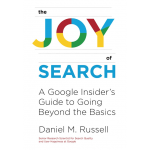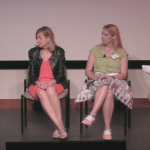I love learning something that radically changes my understanding of the world…
 |
| Elysia chlorotica, a sea slug that incorporates chloroplasts into its body. P/C Patrick J. Krug, Creative Commons CC BY-NC 3.0 license, via Wikimedia Commons |
If you’re a regular SRS reader you might remember our discussion a while back about how some animals incorporate other animal parts into their body. (SRS “Internal Incorporation” May 5, 2021)
In that post I showed one of the best examples of this, Elysia cholorotica (the big green slug above, aka “Emerald green sea slug”) which feeds on algae, and in the process, extracts their chloroplasts (NOT digesting them) and then merging them into its body, making it able to both eat food AND use sunlight to photosynthesize for energy.
That’s very cool.
And we know about plants that eat insects (Venus flytrap, sundew, pitcher plants, etc.), so the idea of plants eating animals for nutrients, and the inverse of that–animals eating plants to steal body parts–isn’t a huge surprise.
However… I always thought that plants were plants (mostly photosynthesizing) and animals were active eaters of other organisms. That’s sort of the classical breakdown–plants sit still in the sunlight, animals move. Sure, some animals (e.g., corals, mussels) sit still and let currents bring food to them, but mostly that’s the split. Plants are still, immobile, fixed to a location. Animals move around and get their food.
I also had learned that most plankton in the ocean were either phytoplankton, which are plants, and zooplankton, which are animals. The natural order of things was that zooplankton eat the phytoplankton.
Like other plants, phytoplankton take in CO2 and release oxygen. As a result, phytoplankton account for about half of ALL photosynthesis on Earth, making them one of the world’s most important producers of oxygen.
But then I read something that deeply surprised me: In a Scientific American article (“The Perfect Beast,” April 2018) I learned about mixotrophs, single-celled plankton that are neither really animals nor plants, but a weird mix of the two. They’re just one cell, but they can attack and feed on other unicellular plankton, including those that have chloroplasts, which they then use just like Elysia chlorotica.
That’s a bit of a surprise–that body part incorporation happens at the single-cell level, with some single-cell plankton stealing chloroplasts from other single-cell green algae.
But then the article went on to say that around 50% of ALL single cell organisms in the sea are mixotrophic–that is, half of all the unicellular plankton can attack and eat others, making the ocean a scene of constant, unrelenting warfare.
The big surprise to me was that I’d never heard of the word “mixotrophic” before. It’s such an unusual word that I’m pretty sure I would have remembered it. So, how did I miss it?
That’s the part I love about my reading–I’m constantly learning new things, including deep ideas that overturn my long-held beliefs. There’s that moment of frisson when you realize that what you know needs to be updated–to change in a way that you never thought possible.
Like many of you, I used to think that unicellular plankton were either plants or animals with a clear division between them and that the majority of unicellular plankton were quietly hanging out in the water column, photosynthesizing and making oxygen for the world.
Ah, now… apparently the unicelluar world is red in tooth and flagella, with one-celled organisms finding, attacking, and consuming others, and stealing body parts.
These are plants that actively hunt down other mobile plankton. “Plants that hunt,” or are they “animals that photosynthesize.” Either way, the neat divisions break down, which is kind of reflective of our times. The more you know, the less clear the categories really are.
As I read the article, several research Challenges came immediately to mind. Can you help me answer these?
1. Do mixotrophic plankton ONLY steal chloroplasts, or are their other kinds of organelles that they rip out of the prey? If so, what else gets stolen?
2. How long has the concept of mixotrophic plankton been around? Is it possible that this is relatively new understanding of planktonic ecology?
Of course, I’d love to know the answers to these Challenges, but just as important, be sure to let us know HOW you figured out those answers. What SRS methods did you use? We all want to learn how to do this kind of deep research.
Keep searching!




